Follow this comprehensive guide for Alocasia odora Care and include this tropical beauty in your plant collection.
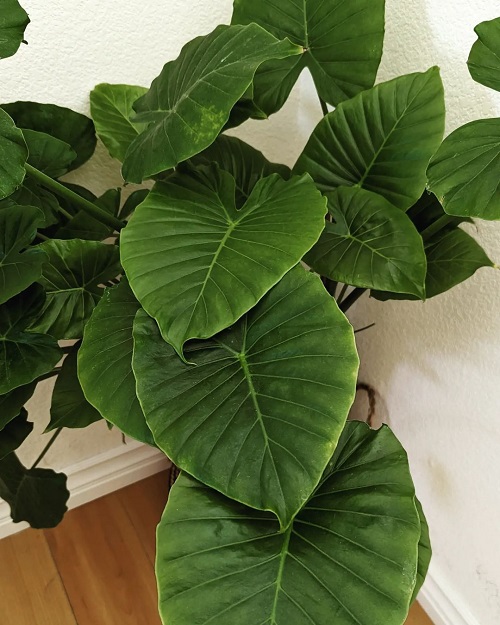
Alocasia odora stands out with its vibrant, tropical foliage. Learn how to grow and maintain this stunning plant, bringing a touch of exotic beauty to your indoor or outdoor space!
Check out Alocasia Dragon Tooth Care and Growing Guide
Alocasia odora Information
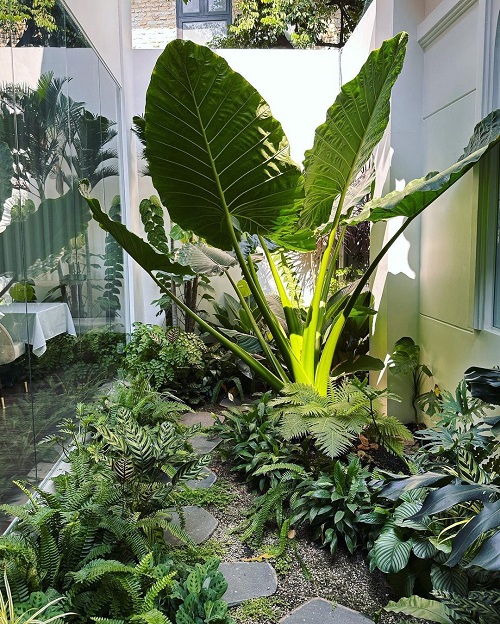
Alocasia odora, a native plant of Southeast Asia, is an exquisite perennial tropical plant that is closely related to the taro root, which is used as food. It is widely recognized for its striking large leaves in the shape of an arrowhead and is referred to by various names such as giant upright elephant ear, Asian taro, or night-scented lily.
This plant showcases impressive, glossy, heart-shaped foliage in vibrant green hues, standing tall on sturdy stems. Resembling the ear of an elephant, each individual leaf can reach up to 2-3 feet in length.
During late spring and early summer, the Alocasia odora may produce delicate pale peach-colored spathes and spadices. What makes this plant truly captivating is its enchanting fragrance, which becomes more pronounced during the nighttime hours.
Have a look at the Alocasia Frydek Care and Growing Guide
Propagating Alocasia odora
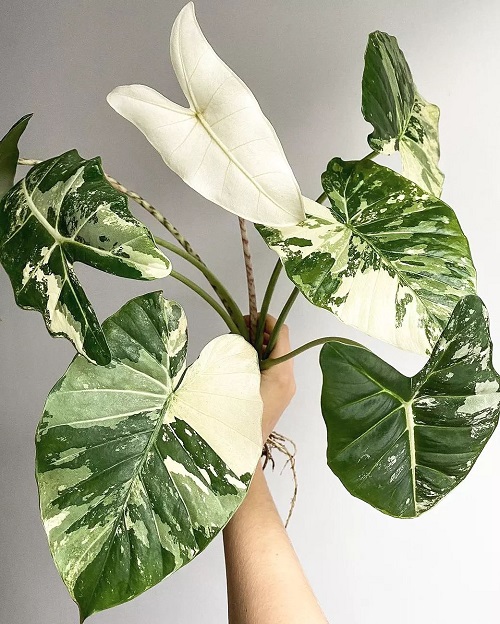
To propagate Alocasia odora, the most effective method is division. It is recommended to undertake this process during the spring and summer seasons.
- Gently remove the Alocasia odora plant from its pot, being careful not to damage the tubers.
- Each tuber has the potential to grow into a separate plant, so it’s important to keep them isolated from the mother plant.
- Prepare new pots by filling them with fresh, well-draining soil. Place the Alocasia Odora tubers in their respective containers.
- Find a warm and humid location with ample indirect sunlight.
- It is crucial to maintain a moist soil environment, so water the plants regularly.
- In a matter of weeks, you will start to notice the sprouting of roots, and before you know it, you’ll have new thriving Alocasia odora plants!
Propagate Any Plant Cutting Quickly Using this Trick
Requirements for Growing Alocasia odora
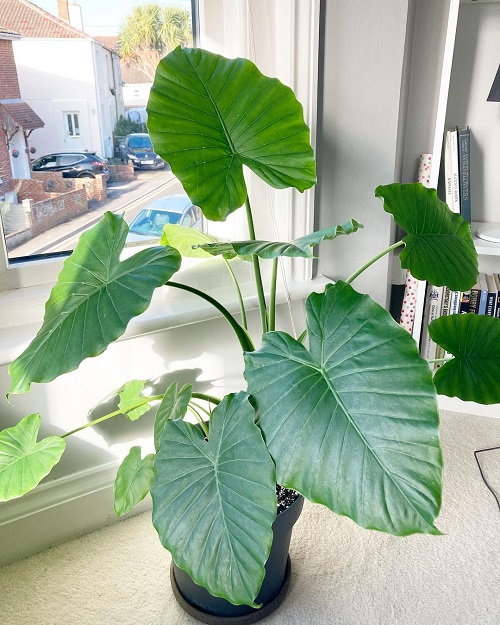
Light
The majority of Alocasia species can thrive in shaded conditions, although they prefer filtered sunlight that is slightly brighter. If you plan to keep them as indoor plants, you can place them near an East-facing window.
For outdoor planting, choose a site that offers partial shade or a shade garden. It’s important to strike a balance where Alocasia odora receives an appropriate amount of sunlight—not too much, nor too little—as both extremes can impact its growth.
Soil
For optimal growth of your Alocasia odora, it is important to provide it with rich, moist, and well-draining soil. Choosing loose soil over heavy soil is crucial to prevent excessive moisture retention that can lead to root rot.
Since this plant naturally thrives near ponds and streams, incorporating a generous amount of organic matter into your soil mix is highly beneficial. Adding a modest quantity of peat moss and/or perlite to your potting mix helps create a moisture-rich growing medium that supports the plant’s growth.
Tip: Maintaining a soil pH within the range of 5.5 to 6.5 is recommended. This pH range ensures the availability of essential nutrients for the plant’s overall health and development.
Learn How to Check the Soil pH at Home here
Water
Alocasia plants, being fond of water, require consistently damp soil throughout the year. However, it is crucial to avoid overwatering and keep the soil moist but not excessively wet. When the soil becomes waterlogged, Alocasia odora may become more susceptible to fungal diseases.
Here are Signs of Overwatering & How to Save an Overwatered Plant
Conversely, Alocasia plants dislike dry environments. Although they can tolerate a few days of low water, frequent dry spells will negatively impact their well-being.
Follow the simple rule of watering the plant whenever the topsoil feels a little dry to the touch.
Temperature & Humidity
The ideal temperature range for Alocasia odora is between 65°F (18°C) and 85°F (29°C).
Cluster your Alocasia odora together with other houseplants. As plants transpire, they release moisture into the surrounding air, creating a microclimate with higher humidity.
You can also place a humidifier near the plant to add moisture to the air. This is especially useful during the dry winter months when indoor humidity tends to drop.
Here are 10 Ways To Increase Humidity For Houseplants That Work
Alocasia odora Care
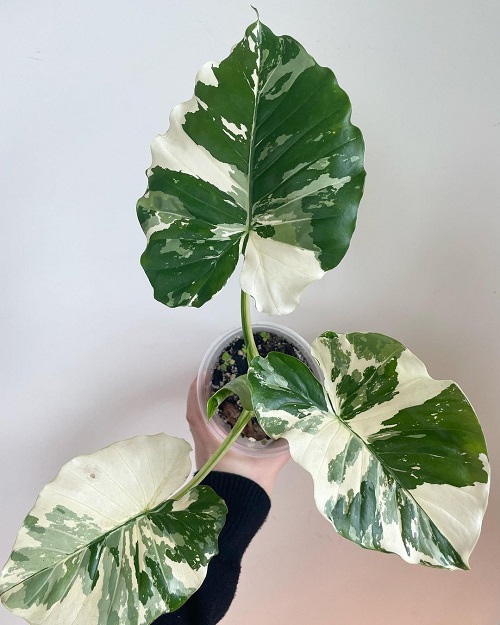
Fertilizer
Alocasias, particularly larger species, have high nutrient requirements. Use a balanced liquid fertilizer diluted to 50% of the recommended concentration, once in 5-6 weeks to feed Alocasia odora.
During the winter, it is important to allow the plant to rest and refrain from fertilizing it.
Here are Effective Homemade Lawn Fertilizers That Are Safe From Hazardous Chemicals
Overfeeding can be more detrimental than underfeeding, as excessive fertilization can result in salt residue buildup in the soil. This can lead to fertilizer burn, causing damage to the plant.
Pruning
Most of the pruning for your Alocasia odora will involve the removal of dead, dying, damaged, or discolored leaves. It is also important to trim off yellow, brown, or spotty leaves to maintain the plant’s health.
Pests and Diseases
Alocasia odora is susceptible to common pests such as mealybugs, scales, aphids, and spider mites. To keep these pests at bay, use a neem oil solution or an insecticidal soap solution.
In addition to pests, Alocasia odora can be prone to fungal infections such as crown, stem, root rot, leaf spot, and Xanthomonas infection. Symptoms of these diseases include the presence of black or dark brown patches on the leaves with a golden rim around them.
To prevent these diseases, it is crucial to follow proper watering practices and avoid overwatering the plant. By maintaining appropriate watering procedures, the risk of fungal infections can be minimized.
Click here to learn the Amazing Natural Pesticide Recipe that can Kill any Pest
Alocasia odora – Toxicity
Alocasia odora contains calcium oxalate, a biomineral present in all parts of the plant. This compound is typically in the form of crystals and is toxic. Ingesting it accidentally can cause a sensation akin to being pricked by numerous tiny needles in the mouth, tongue, and throat.
Keeping it away from curious children and pets would be a good idea!

